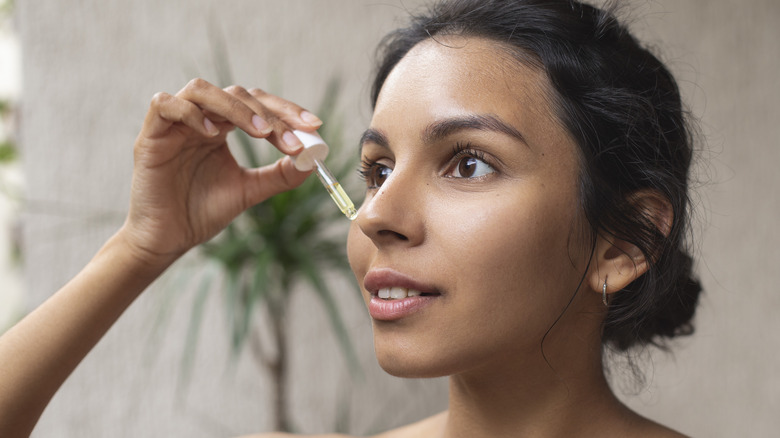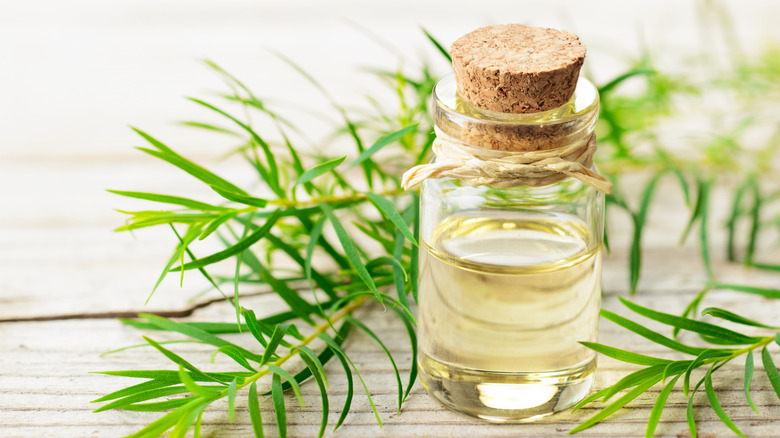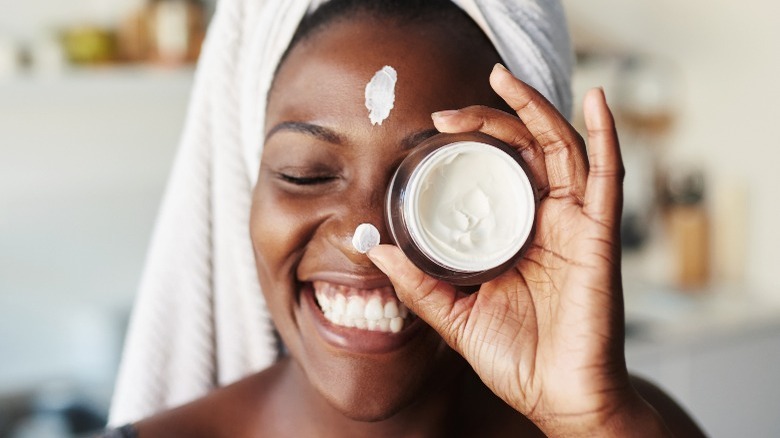Everything You Need To Know About Using Tea Tree Oil On Your Skin
Different skincare trends, along with constantly emerging ingredients, are great because there's something for everyone. Whether your skin is oily, dry, sensitive, or a combination of the three, there's a skincare trend that has your back.
Switching up your skincare routine from time to time is definitely necessary. The skin has different needs throughout the year and as we age. However, the abundance of options available on the market can make building your skincare routine harder, since you may not know where to start or what to try first.
If you don't know where to start, turn to the skincare classics. Oils have always been much talked about in the beauty world. While incorporating them into your skincare regime isn't groundbreaking, some of them have become staple ingredients in the beauty industry. Maybe the most famous oil in the skincare world, tea tree oil, is also quite underrated — as it's often only talked about when acne is discussed. Using tea tree oil on your skin might be what you're missing from your routine, even if you don't have blemish-prone skin.
Tea tree oil calms the skin
Tea tree oil is an essential oil that's derived from the tea tree plant. It's native to the southeast coast of Australia. Today, it's often used to treat acne, and there's a mighty good reason for that. Tea tree oil contains a chemical compound called terpinen-4-ol, which fights acne-causing bacteria, as board-certified dermatologist Marisa Garshick, M.D., shares with Seventeen. "Some studies have shown [tea tree oil] to reduce inflammatory breakouts, including red bumps, as well as non-inflammatory breakouts including blackheads and whiteheads," she further explains. Because of its germ-fighting properties, tea tree oil has been used as herbal medicine by Aboriginal Australians for centuries. Wesley notes that this history is precisely why it's also used as a disinfectant on the skin.
Other than those with blemish-prone skin, tea tree oil benefits skin that tends to be dry as well, says Ava Shamban, M.D., a board-certified dermatologist. "For dry skin that may be irritated or inflamed to compromise the barrier matrix, [tea tree oil] functions to calm the skin," she tells Allure. Next time you restock, make sure to put tea tree oil on the list of ingredients to look for if you have dry skin.
How to incorporate the classic skincare ingredient into your routine
If you've never used tea tree oil before, patch test it to avoid a bad skin reaction. Once in the clear, apply it topically and never use it in its purest form. "High concentrations of tea tree oil can cause irritation and have the opposite effect of what you are looking for," board-certified dermatologist Nazanin Saedi, M.D., explains to Seventeen.
To be safe, instead of using the oil on its own, use products that have it as an ingredient. "There are many cleaners, moisturizers, and acne treatments available that include tea tree oil, just use them as directed," Saedi notes. Products containing lower concentrations of tea tree oil are generally safest to use. These products often combine tea tree with other beneficial ingredients, like niacinamide and salicylic acid.
Garshick warns not to use tea tree oil (or products containing it) at the same time as harsher ingredients like benzoyl peroxide, glycolic acid, and retinoids. If you generally have sensitive skin or a damaged skin barrier, it's recommended you avoid using tea tree oil altogether — as it may be too much of an irritant.


